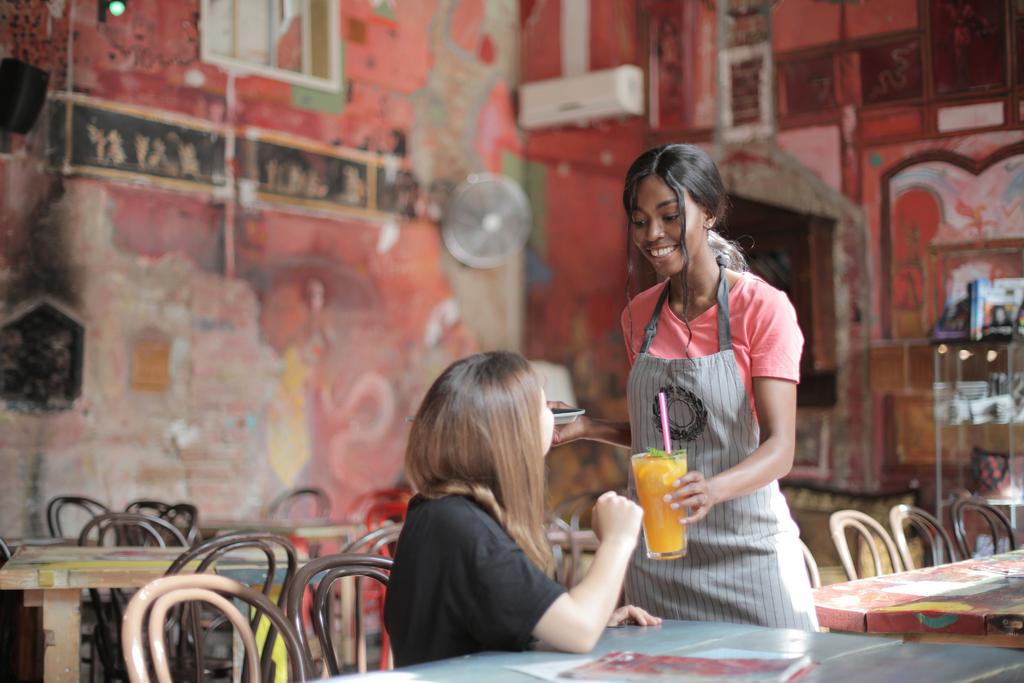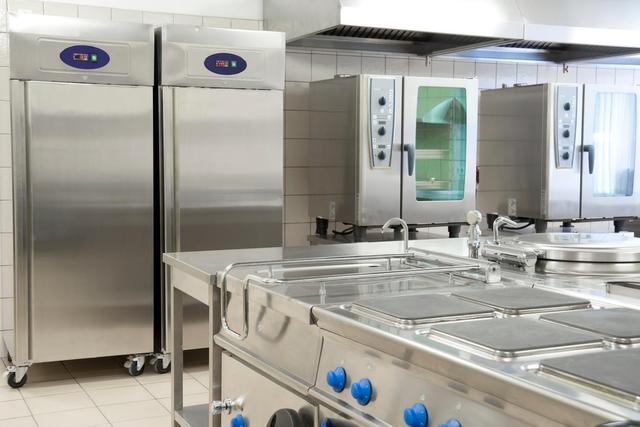Not sure what are the different types of customers in a restaurant?
Not sure how to satisfy them all?
When creating the concept of a restaurant and its business plan, it is normal to take into account the target audience or the buyer persona.
Your restaurant may have a very specific type of customer.
However, studying the different types of restaurant customers that can enter your business, their personalities, and habits is not common.
That is why I created this article to give you a general idea of the different types of customers that can visit your restaurant, and how you can satisfy them.
This guide is independent of the specific target demographic of your business but is applicable to the different personalities or attitudes of customers who will visit you within that demographic or outside of it.
Let's get started!
hImportance of Recognizing the Different Types of Customers in a Restaurant

First of all, let me tell you a little about the importance of knowing how to recognize the different types of customers in a restaurant.
There are many people in the world, each with peculiarities and patterns of behavior. And, of course, since there are people everywhere, that applies to all countries and cities alike.
Therefore, it is easy to conclude that your restaurant will be visited by different people with a wide variety of personalities — and you must know how to serve each type of person to offer quality service.
If you fail to satisfy every type of customer, it is almost inevitable that your restaurant will gain a bad rep.
It is also possible that your employees cannot offer a good quality personalized service.
This is more common than you might think, as employees also have personalities that can be contrary to your customers' personalities — being just decent isn't enough.
In order to satisfy everyone, your restaurant servers must be neutral, friendly at all times, have problem-solving skills, and preferably have a studied and standardized reaction for each scenario.
Thus, they will know how to react when offering the service in your restaurant, because they will be able to adapt more easily to customers.
Types of Customers in Restaurants and Specific Strategies to Serve Them
As I mentioned earlier, there are many types of personalities and customers that can go to your restaurant.
Here are some examples of common profiles of restaurant diners, and specific strategies you can use to serve them effectively.
Indifferent Restaurant Customers

Indifferent customers are those who walked into your restaurant almost by chance and are there to fulfill a specific function — which may or may not be related to your business.
They may be there to eat, talk to someone, or meet up with their friends.
But, most remarkably, they don't really care much about service or food, unless something is wrong enough to get their attention or distract them from their goal.
How Can You Serve Them Better?
First of all, they are easy to identify: if the waiter shows up at the table and the customer is still talking to his company or focused on something else, and they take a while before interacting with the waiter, it is possible that it is an indifferent customer.
With indifferent customers, the key is for your servers to avoid:
- Making serious mistakes
- Putting a lot of pressure on customers
- Overselling certain dishes
- And distracting customers with questions
As general rules, everything your waiter offers should be available, that everything that this customer asks for is of good quality when served, and that the atmosphere of your restaurant is pleasant or at least constant to avoid distracting them from their goal.
Vigilant Restaurant Customers
Observing clients pay the most attention to the smallest details. It is not necessarily details related to the service, or the food, for example, that their steak is slightly overcooked.
Instead, they will point out certain specific details, such as that the waiter has some ketchup on his uniform or that he has a suspicious stain on his right hand.
They will notice if the tables are a little misaligned or if the menu has a misspelled ingredient.
They will also complain if the edge of one of their fries is badly burned and more.
In some cases, this type of customer may point out more serious errors, such as that the food is taking too long or that the steak is really overcooked.
How Can You Serve Them Better?
Simply, train your servers in three things:
- To solve problems easily and quickly
- To pay close attention to your personal presentation and that of their colleagues. It's hard to tell if the back of a shirt is dirty without someone pointing it out — and you must avoid that the one pointing that out is the customer!
- And that they know when an error requires an immediate solution and to communicate it to their superiors, especially if it is something that has been pointed out by several vigilant clients
These practices will make running your restaurant and satisfying vigilant customers easier — you won't give them what to complain about!
Informed Restaurant Customers
This type of customer only visits the restaurants with the best reputation, the best gastronomic offer, and the best service.
Informed customers are special because they know how certain aspects of the restaurant business work — perhaps they are chefs, critics, sommeliers, or restaurant owners themselves. They may also frequent many high-quality establishments and pay attention to the different restaurant services, so they are demanding because they have standards.
They may point out errors in the food, service, or more specific details like the sommelier's suggestion of wine.
Additionally, they may have detailed demands that the restaurant cannot meet, which almost automatically makes them determine that the experience at your restaurant has been negative.
How Can You Serve Them Better?
There are several things that you must take into account to satisfy the needs of this type of client.
First of all, this type of customer visits specific types of restaurants. They believe that the restaurants they visit must be prepared to meet their demands — and it is true.
That is why, if you have a client of this type, you may need to have the means to satisfy them because they should be part of the demographic studied in your business plan.
Therefore, to serve them correctly, you must:
- Educate your servers to serve elite customers
- Create a service strategy and define the type of service for your restaurant to meet their expectations
- Having the right dishes and drinks
- And offer dishes that are perfect in every way
If you fail in any of these aspects, this experience will be negative for the client and the employees.
Friendly Restaurant Customers

Friendly clients are the easiest to satisfy.
These are those customers who start conversations with the servers, know their names, and treat them very well.
There is a variant of this customer in every type of restaurant. For example, customers who are friendly with waiters at a high-end restaurant, or friendly customers who befriend waiters at a fast-food restaurant.
They also might be friends with your waiters outside the restaurant.
These clients are great — but they also present certain challenges that your staff must deal with.
For example, they can distract your servers from serving other customers.
They can also cause your servers to lose sight of the limits of professionalism, and misbehave.
They are easy to serve because they usually don't have many complaints regarding the service — unless the error is very serious.
But, they may cause your servers to make mistakes, which is unacceptable.
How Can You Serve Them Better?
Friendly customers are easy to serve, and you may not have to do much to satisfy them other than offering good quality food and service.
On the other hand, you should make sure that your servers are properly trained so that they avoid falling into frivolity in the middle of the service or neglect other aspects, such as other tables with customers waiting.
You will have to establish rules for the service so that the waiters behave in a friendly way, but with limits.
It is also recommended that when friends or family members of a waiter show up at the restaurant, it is not the same waiter who serves them, but rather another member of the team.
This way you will avoid this same problem and others, such as ant theft.
Abusive or Arrogant Restaurant Customers

Abusive customers are those who know more than servers — even when they don't.
They are arrogant, they may ask for things that are not on the menu, and they are simply irrational.
These types of customers present a great challenge — they are not only annoying to the service, but they can be annoying to the rest of the diners in the restaurant, especially if they are noisy or confrontational.
They may also be customers with other flaws, such as swearing out loud, discriminating against other customers or your wait staff, and more.
How Can You Serve Them Better?
These types of clients require a waiter who is patient, polite, and who knows how to de-escalate the situation using various methods.
As a recommendation, it is a good idea to train your servers to deal with these types of customers without causing a major altercation.
Therefore, your team of servers should know how to deal with them calmly.
And finally, you should create a plan to deal with these types of clients if the situation turns extreme or escalates to violence.
In that case, you will need to have a procedure to get the customer to leave your restaurant, which may include collaboration from the police, employees, and more.
Indecisive Restaurant Customers

Indecisive customers are also very common. These are customers who must know various details of each dish before making a decision.
It's also about customers who just don't know what to order to enjoy their food.
Regardless of their situation, indecisive customers can slow down your service, occupy a table longer than average customers, and keep your servers busy.
Therefore, you must have a service strategy to deal with them.
How Can You Serve Them Better?
When interacting with indecisive customers, the most important thing is that the server has a lot of patience.
Especially since the customer can ask about 20 or 30 questions before ordering a dish, which makes the service slow.
These are some strategies that you should apply:
- Train your waiters to know every detail of each dish
- Create specific suggestive sales scripts for this situation
- Have the waiters offer undecided customers the best-selling dishes of your restaurant or the most delicious to speed up the service
- And train your waiters to be very patient when offering the service.
Besides these strategies, there is not much that can be done besides waiting for them to make a decision!
Restaurant Customers Who Are in a Rush

Clients in a hurry are those who are ready to leave before they arrive. They want fast service, food to be ready as quickly as possible, and every aspect of the restaurant to be seamless.
This type of customer is the best that restaurants can get. Why? Simply because they occupy the restaurant for less time, worry less about the details of the service, and leave without eating in the restaurant or eating quickly, which reduces the difficulty of service.
Still, there are several ways in which service can be improved for this customer.
How Can You Serve Them Better?
Serving customers in a hurry is easy — avoid wasting time.
In that sense, the waiters should simulate haste. If they walk, talk, or move very slowly, the customer may be upset.
Therefore, they should imitate the customer's haste, and try to rush the service in some visible way.
Walking fast, talking fast, offering effective solutions like the fastest food to prepare, and more will greatly improve service for this type of customer.
In addition, it is a good idea to indicate to this type of client the services that the restaurant can offer, such as online orders, or the takeout format, so that the client orders and pays for the food online and then just pick it up, and everything is faster.
Loud or Showmen Restaurant Customers
Loud or showmen customers can present themselves in a number of ways in a restaurant.
If they are alone, they will want to order the most expensive dishes, the most expensive drinks, and basically announce it by speaking in a high tone of voice so that all the other customers will know.
If they present themselves in a group, the situation may be more complex, because they may want to surprise their companions by doing the same.
They can also become aggressive or overbearing customers or toxic customers.
The objective of this type of customer, more than eating, is to attract attention.
How Can You Serve Them Better?
This is the type of customer most hated and loved by servers — I've been in their shoes!
Why are they so annoying? Because these are customers who possibly behave that way because they want to be annoying or because they want to attract attention. Therefore, it is easy to have emotional reactions of contempt towards them.
Therefore, the essential rule to keep in mind when dealing with these clients is to remain calm and keep personal opinions under control.
After all, this type of customer may also be the top tipper or ask for the most expensive dishes with nice profit margins for your restaurant, especially if they want to impress their companions!
Toxic Restaurant Customers

Toxic customers are those who want to take advantage of your restaurant to win something.
They are those who say they have not ordered certain dishes even though they did, those who directly treat the waiters badly, and then complain to the manager to get something in return, such as free food or complementary dishes.
They are currently defined as the "Karen" meme on social media.
How Can You Deal With Toxic Customers?
The main thing is to know how to differentiate a toxic customer from a customer with a legitimate complaint about the service.
You should pay attention to the nature of the complaint, the evidence, and veracity of the complaint, and the attitude of the person.
There are two aspects that can determine whether you are dealing with a toxic customer — threats and demands.
If a customer makes exaggerated demands for a small mistake, they are almost certainly a toxic customer.
And if they start making threats, for example, that they will not return to the restaurant again, or that they will damage the restaurant's reputation with a post on Instagram or on TripAdvisor.
Then, you should know how to deal with this type of toxic customer.
- You can tell your servers to call you right away so you can deal with the complaint directly.
- Or you may want to offer them complimentary dishes just to avoid further problems.
- Or maybe you just want them to go away.
As an added recommendation, it's a good idea to document all interaction with these types of customers, especially if it turns into a violent, turbulent altercation.
This way you will have how to defend yourself if the toxic client wants to escalate the situation to the maximum, such as suing your company.
It should be noted that you also have a strategy to apologize effectively to the rest of the diners.
Cover the Basic Service in the Best Possible Way
If there is something that you must define correctly for all customers, it is the basic service of your restaurant.
This includes:
- The hygiene of your restaurant
- The hygiene of the bathrooms
- The quality of the presentation of the dishes
- The hygiene of the cutlery, plates, glasses, and more elements of the service
- The personal presentation and hygiene of your employees
- The quality and food safety of your dishes
- The quality and details of your menu. For example, that they have dishes marked with allergy risks
- And the speed of your point of sale system and the overall sales process
Optimizing all these aspects will help you cover the basics efficiently, identify more complex errors, minimize service and staff errors, and much more.
Have you optimized the service of your restaurant? Do you know how to serve each type of client?




